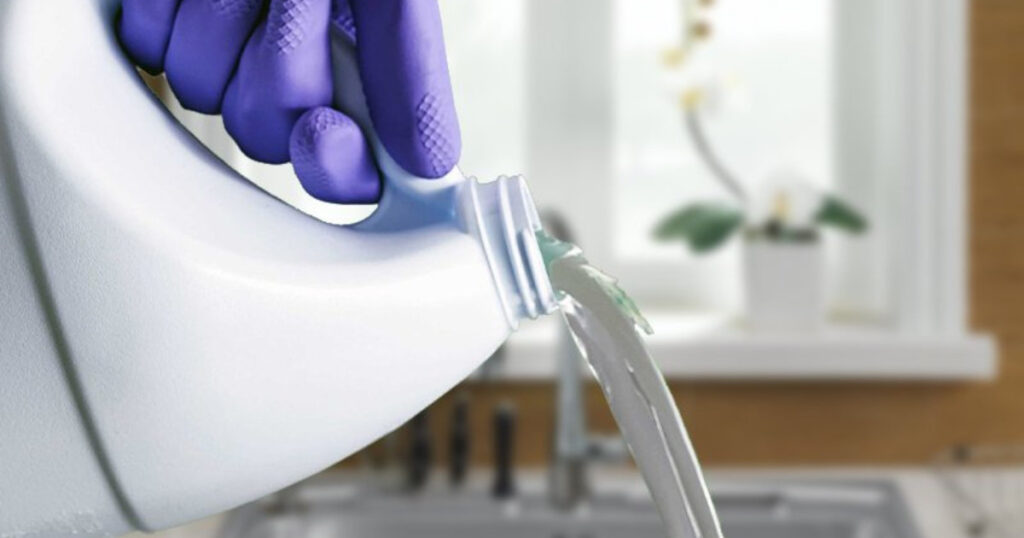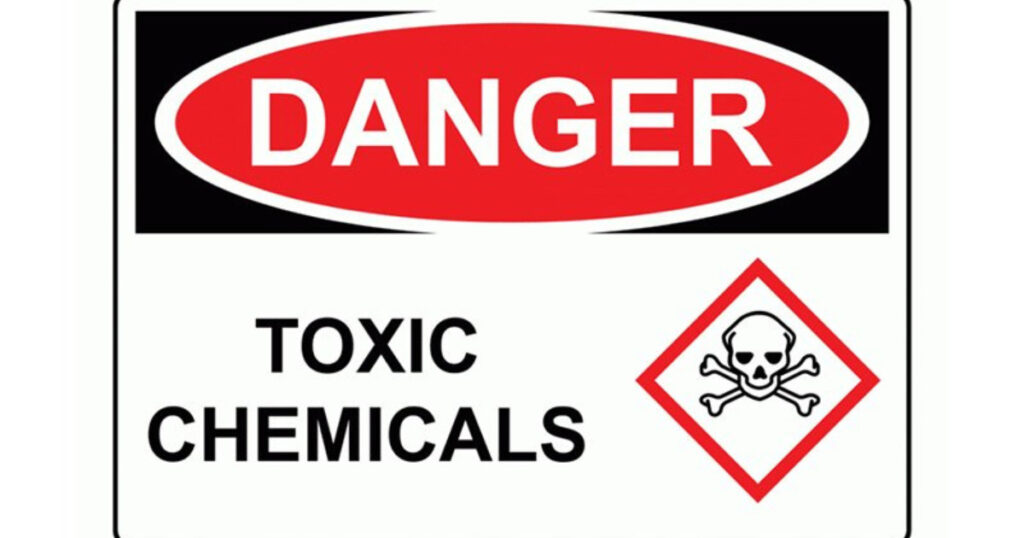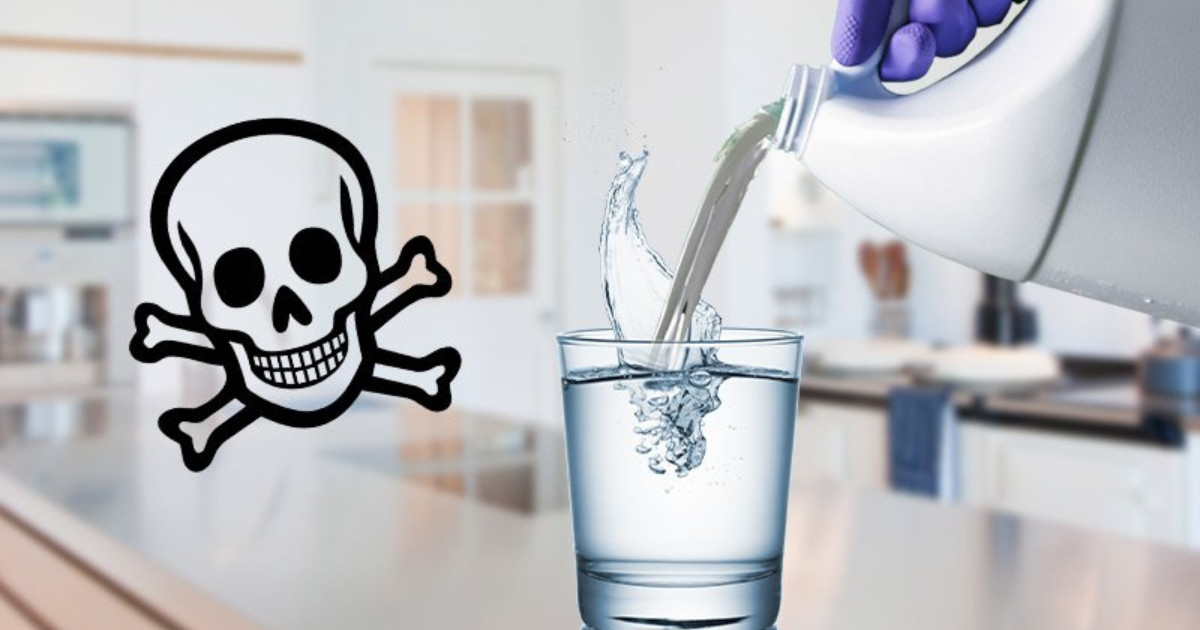Drinking chlorine water can have a range of effects on the body, ranging from positive to negative. The human body does require chlorine as it is one of the minerals our body is made out of. However, obtaining our required chlorine levels through drinking water has been shown to be quite dangerous.
From a simplistic perspective, chlorine is added to drinking water to kill bacteria. If the chlorine is not filtered back out prior to consumption, you are absorbing this chemical. If chlorine is able to kill bacteria in our water supply, it is not a far stretch to see it is capable of doing the same thing within our body.
Is Drinking Chlorine Water Harmful?
There is a range of medical experts, agencies, and publications who agree that chlorine is causing human harm. You can read a summary of their quotes here.
According to science, drinking chlorinated water can lead to a range of health issues over the long term, which will discuss below. Firstly we will look into why we need chlorine in our body, what part it plays, what quantity is recommended, and how to intake it safely. 1
What is chlorine?
The definition of Chlorine as given by Google’s search results defines it as “the chemical element of atomic number 17, a toxic, irritant, pale green gas.”
Chlorine does not have a pH level, due to the absence of positive hydrogen ions. It does however react very differently when added to a certain water. Depending on the pH of the water it is added to, it can have almost no effect on the water.
Chlorine added to water with a pH of 6 will have a 97% effectiveness at killing bacteria. Whereas water with a pH of 8 will reduce this to 3% effectiveness.
At its basic level, chlorine is an element and an essential mineral for the human body to function. The main issue we are facing today with chlorine is the levels our bodies are absorbing.

Why do we need chlorine and what part does it play?
Chlorine plays a vital role in the function of the human body. Hydrochloric acid is the main acid used by the stomach to break down foods. Hydrochloric acid contains chlorine, and the chlorine component helps to regulate and aid the digestion process.
It is necessary for healthy nerve and muscle function and vital for healthy brain function. Chlorine is also utilized by the body to help create blood plasma when needed.
How much chlorine should I be taking?
Almost all sources and studies agree that your chlorine intake should be at the same levels as your sodium intake. For an average human adult, 3,400 mg of sodium is recommended to be consumed per day.
If you need an exact number for yourself, check in with your health professional so they can advise the amount your body needs.
It can be hard to see how much chlorine you are taking, however. The water that you bathe or shower in will likely contain chlorine and be absorbed by your skin. Having hot showers can increase your intake as the steam produced will contain chlorine in a gas form.
Luckily, there are shower head attachments you can equip to reduce the number of contaminants you are showering in. One unit boasts a 15 stage filtering mechanism, while another claims to be able to remove as much as 90% of the chlorine from your water in the shower.
How do I get my daily intake of chlorine?
You can get chlorine for eating a range of foods. Table salt is the most common way to get chlorine into your body. However, you can also get plenty of chlorine from foods such as eggs, seafood, wheat, or canned foods. You can see a full list of foods and how much chlorine they contain here.
Drinking chlorine water, yes or no?
At Detox&Cure, we recommend against drinking chlorine in your water. The side effects do not outweigh the positives put forward. While chlorine does kill off bacteria that could be harmful, it should be filtered out before consumption.
If you are like most of the population, you will get most of your water straight from the tap. Pretty much all local water dams will contain chlorine, as it is a cheap option to clean out bacteria from the water supply.
Thankfully technology can help you overcome this issue. Water ionizers and filter pitchers can clean your water and also alkalize your water (improve pH level).
Alkaline water can have a range of benefits over regular water. The filtering out of chemicals is a major benefit to your health. Alkaline water is just an added bonus!
What are the negatives of drinking chlorine water?
There is a range of negative effects you can suffer from overconsuming chlorine. We will focus on the effects that drinking chlorine water can potentially have on your body.
The major negative effect of chlorine water is heart-related. It has been proven through many studies and experiments to negatively affect arteries and cause a wide range of issues as a result, including death.
Atherosclerosis is the scientific term for the build-up of fatty deposits within your arteries. This process lowers the amount of blood and oxygen that can be pumped through your arteries and can even lead to blockages. 2
Dr. Joseph Price
A study conducted in 1969 with cockerels by Dr. Joseph Price showed compelling evidence that chlorine is a key factor in arterial congestion. The group of cockerels were halved, with one group given chlorinated water, and the control group given non-chlorinated water.
Autopsies showed that all cockerels in the chlorinated water group had atherosclerosis. All the control groups had a clean bill of health.
To further test the study, the control group were halved and tested again. The second chlorine water group had the exact same results as the first chlorine water group. Every cockerel had atherosclerosis after consuming chlorine water.
The Roseto Effect
A small town in Pennsylvania called Roseto lived on a high-fat diet and had close to zero heart attacks in 1955. The town changed its water source from natural spring water to purified water cleaned using chlorine. Within two decades, heart attack rates skyrocketed, all with no other major changes to their diet.
Low levels of chlorine added to a water supply will often take years to appear in a human body. The Roseto Effect is consistent with this timing, as it can take anywhere from 10-20 years for atherosclerosis to appear due to chlorine exposure.
Korean War GI’s
William F. Enos and a team of physicians conducted autopsies on 300 general infantry soldiers who were killed in battle. Being fit and able soldiers, they were expected to have a relatively clean bill of health. However, 77% of the autopsied soldiers were reported to have “gross evidence of arteriosclerosis in the coronary arteries”.
While the connection was not made at the time, there is evidence to show that chlorine may have been responsible. Soldiers in the war were supplied with chlorine to clean local water sources. This led to water being heavily chlorinated and consumed.
While the link has never been officially made, there is fair evidence to show that chlorine at least played a role in causing arteriosclerosis in those soldiers.

Links to cancer?
The word cancer is not to be thrown around lightly in the health and wellbeing field. However, there is scientific evidence showing that increased exposure to chlorine has led to an increase in melanomas. 3
Long-term consumption of chlorinated water can lead to increased free radical formation within the body. Higher free radical count accelerates aging, increases vulnerability to genetic mutation, and increases the chance of cancer development. It can also cause difficulty in metabolizing cholesterol and promote the hardening of arteries.
Excess free radicals created by chlorinated water also create a toxic environment within the body. This internal environment has been directly linked to liver malfunction and the weakening of the immune system. Excess free radicals have also been linked to alterations of cellular DNA.
Vitamin E is a powerful counter to excess free radicals within the body. However, chlorine destroys vitamin E within the body, leading to deficiencies and a reduced ability for the body to clean out excess free radicals. Not being able to clean out the excess free radicals decreases our protection from cardiac complications. It also creates an environment suitable for cancer cells to form.
A study in 2015 on mice revealed that consumption of chlorinated water increased your odds of tumor cells forming in your small intestines. To quote, “The consumption of chlorinated and tap water was associated with increased tumor multiplicity in the colon and distal small intestine”. 4
A study in America concluded that there is evidence of an association between disinfectant products and bladder cancer. They also stated that their findings were in line with other epidemiologic studies in the same area/topic.
Cancers or tumors will develop in the intestine, bladder, and rectum areas due to storing waste products for too long a period. The chlorine consumed will sit inside your body, causing harm and increasing the risk of cancer or tumors. You can help avoid this issue by ensuring you have regular bowel movements to continue flushing out harmful toxins.
Other notable side effects of chlorine consumption
While these are not specifically related to drinking chlorine water, the intake of chlorine in either liquid or gas form can have negative effects:
- It promotes water retention in tissues and organs.
While it’s not necessarily bad for the body to store water, it can create negative effects if the body can’t rid itself of excess stored water.
The major cause of issues is the organs, not the tissue. Fluid retention in the brain can lead to vomiting, headaches, or loss of balance. In serious instances, it can be life-threatening. Fluid retention in the lungs can be an indicator of serious issues with the heart or respiratory system. This in turn can affect the ability of the lungs to supply oxygen to the body.
- Can create or increase the severity of respiratory issues
Nitrogen trichloride is a byproduct of ammonia derivatives and chlorine mixing. Things such as sweat or urine can combine with chlorine to produce nitrogen trichloride. Trichloramines are a known source of causing respiratory issues and aggravating existing ones such as asthma.
A public swimming pool is a great example of the above happening. My childhood memories of the local swimming pool were the overwhelming stench of chlorine. Considering most public swimming pools often contain too much chlorine, it is no surprise that pool workers often develop asthma or other respiratory issues. 5
Reference
- “What is Chlorination?” – SDWF Staff, Last checked 23 February 2024 [Safe Drinking Water Foundation] [Archive] ↩︎
- “What is Atherosclerosis?” – AHA Staff, Last checked 23 February 2024 [American Heart Association] [Archive] ↩︎
- “Are You a Swimmer” A. Denardi, 28 January 2012 [ISSUU] [Archive] ↩︎
- “Chlorinated Water Modulates the Development of Colorectal Tumors with Chromosomal Instability and Gut Microbiota in Apc-Deficient Mice” – T. Sasada, T. Hinoi, Y. Saito, T. Adachi, .Y Takakura, Y. Kawaguchi, Y. Sotomaru, K. Sentani, N. Oue, W. Yasui, H. Ohdan, 17 June 2015 [Plos One] [Archive] ↩︎
- “Con: Respiratory Risks Associated with Chlorinated Swimming Pools: A Complex Pattern of Exposure and Effects” – A. Bernard, C. Voisin, A. Sardella, Last checked 23 February 2024 [ATS Journals] [Archive] ↩︎
Last Updated on 2 months by D&C Editorial Team


